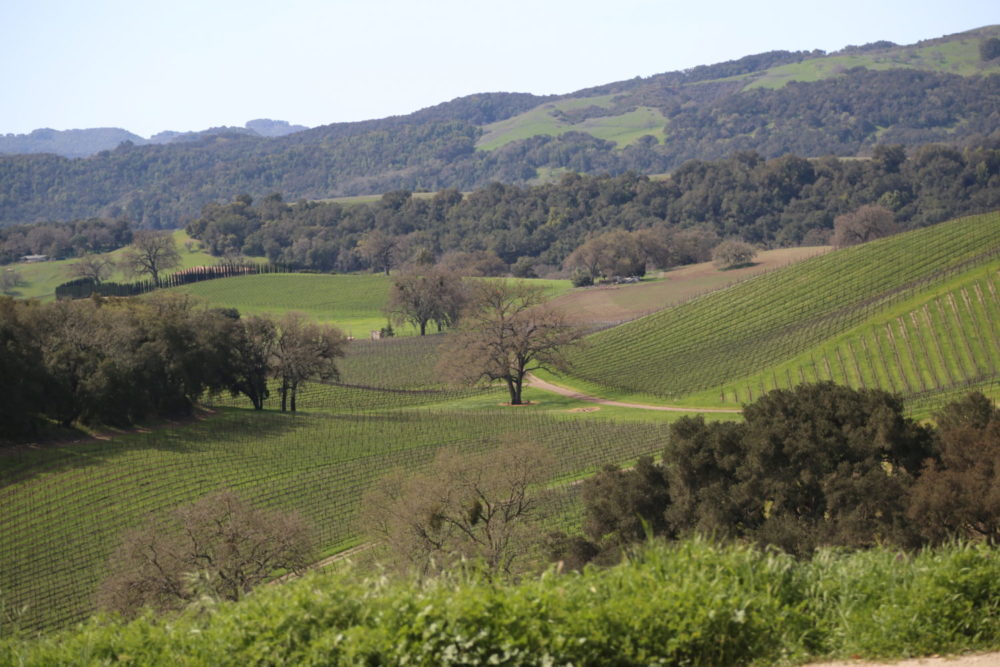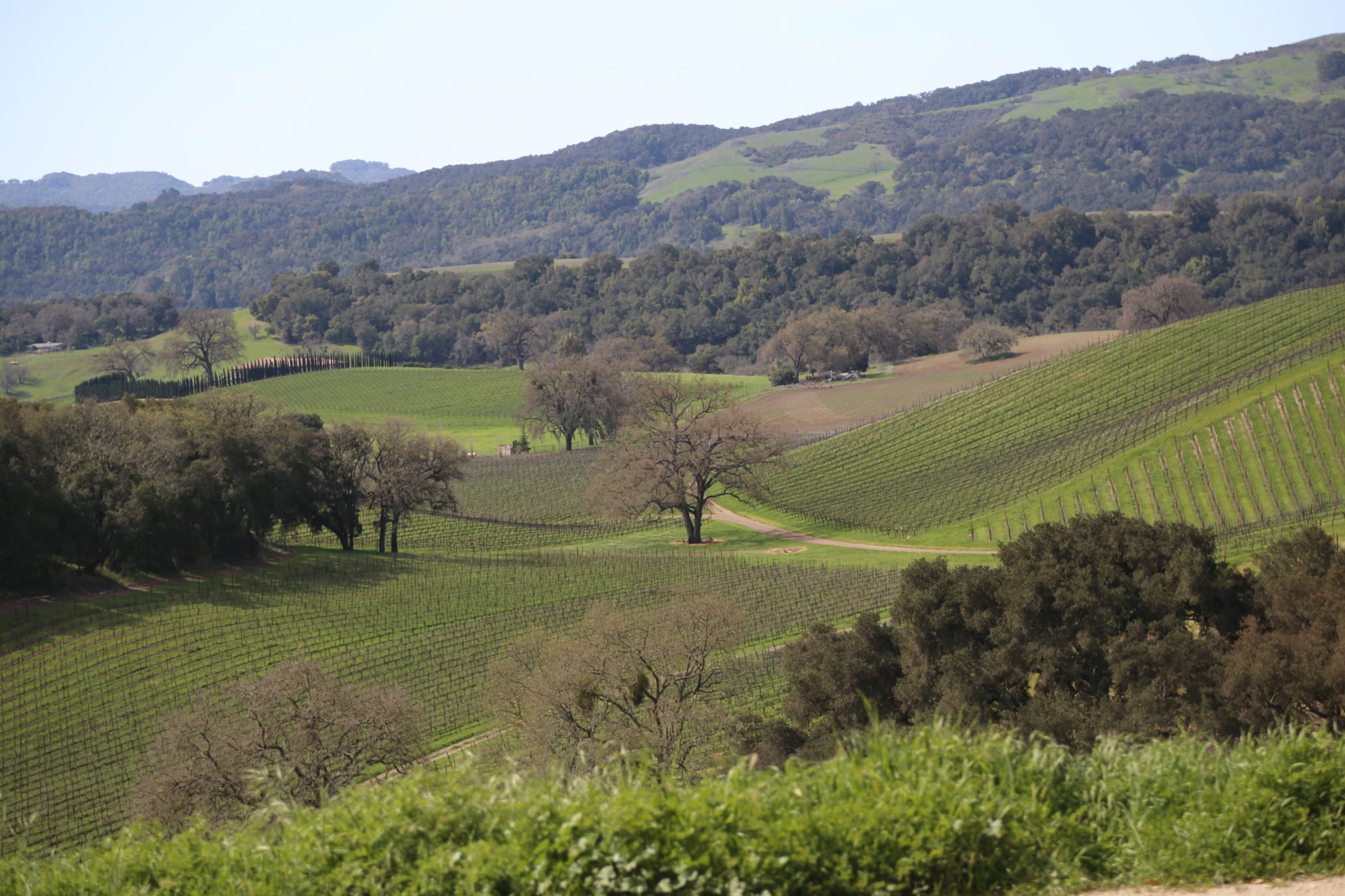
I published the below article in Issue #5 of the Rhône Report, in November of 2010. While I think it’s slightly less relevant today, Syrah still struggles in the market compared to Pinot Noir and Cabernet Sauvignon, despite, in this reviewer’s opinion, delivering just as much (or more) character and pleasure.
California Syrah, an Issue of Style or Price…
Perhaps a little of both. While it is hard to miss the perceived problem of moving Syrah in the marketplace today – and the fact that there is a new joke on the issue daily – I have yet to see anyone attempt an answer. Therefore, here’s a shot. In addition to speaking directly with producers about the problem, I also emailed numerous retail shops as well to try to get a clearer picture. Largely, there was no smoking gun, nor was there a consensus.
Hitting both on the style and price theory, Tom Flickinger of Flickinger Wines (www.flickingerwines.com) out of Chicago says:
“I think Cali syrah followed an arc not unlike Aussie Shiraz. Started off with some great (if irregular) juice, priced right, and got people excited… Pretty soon, lots more shiraz, and higher prices…..but as often happens… people paid up, tried the wines, and after a few years realized….these wines aren’t getting better. Too many are alcoholic, flabby, and not going to evolve in a positive or even interesting way. They’ll soften, and then fall apart. The parallels with Aussie Shiraz -excluding the greats – are obvious.
…
So, combine over-supply, a hyped-up market with prices unrealistically high, and then a nice big fat economic meltdown and you have Syrah that won’t move.
…
The problem is, in general, so-so wines at bad prices – and that’s not unique to Syrah. Doesn’t mean everyone, but if your wines are mediocre, and OR you’re charging too much, then there’s only one direction for the prices to go.”
Another viewpoint from Brad Vanderpool of Primo Vino (www.primovino.net) here in Colorado:
“While there are some producers that have a consistent following even up to cult levels – Saxum for example – in general many of the producers are unknown and are struggling to break into the market and the spotlight. CA is still dominated by Napa and Sonoma, while the Central Coast is slowly gaining some momentum, they are still a hard sell to get general consumer to try them at the prices they are asking. Many of the wines require a few years aging to come into their own and the collectors want the big rating, unless they get a chance to sample them first…
…Syrah has taken a hit partially, I think because of the over blown, sweet Shiraz from Australia that glutted the market (the Aussies are down as well), at a cheap price. When consumers try a CA Syrah with dark fruit and spice and mineral they were confused or put off by it not being juicy and lush. The prices are higher as well and with the $30-100 market being slow for the last two years these have been impacted along with the rest of the market, if not more so. “
So here we have two, well-informed opinions, which not surprisingly, are at complete odds with each other. Tom says the wines are fat and will not evolve, and Brad says no they are not, and, they need a couple years to show at their best.
The reality (as I see it anyways) is that both opinions are correct. As is so easy to do, consumers and retailers are creating a superset of wines, in this case, California Syrah, and applying a specific viewpoint that correctly applies to only a subset of the wines.
California is amazingly diverse and the Santa Cruz Mountains, Santa Lucia Highlands, Paso Robles, Edna Valley, and the Santa Rita Hills regions could not be more different from one another. To complicate matters even more, producer diversity with Syrah (and Rhone varieties in general) is huge and even in a given region you have a large stylistic and qualitative range of wines.
Without a doubt, there are soft, supple wines that need to be consumed inside 5 years of the vintage. Conversely, there are structured wines that need time to develop and show additional complexity. Couple this situation with average bottle prices in the 30 to 50+ dollar range, (the average bottle price across 500+ wines in this report is just shy of $40) and you have a prime situation for an unsatisfied consumer.
This is not to excuse or ignore the high alcohol, over blown issue, but, after tasting through my fair share, I do not find that many poorly made wines. Certainly, it is very possible that a majority of consumers simply do not like a particular style of Syrah. However, is that the case here?
Scott Manlin, who is now producing Syrah with Morgan Clendenen of Cold Heaven Cellars, recently posted the following on the popular www.winetalk.com bulletin board:
“I personally think it is a problem of style. I insisted that Cold Heaven make some Syrah this year (not a lot, about 100 cases), but we were able to source some cooler climate Syrah (biodynamic as well, but I, personally, don’t care about that) which I think makes a nice style of wine. The market will come back around for it… perhaps not the over the top, high alcohol fruit bombs, but the grape itself makes some nice wines. As long as the tannins and acids are perceptible, I can enjoy that style of wine from CA…”
While this is a valid argument, with some merit, the result would be that those making said style would be doing the best in the market. However, last time I checked, this is not the case. Despite there being plenty of options out there, the most sought after mailing lists are for wines that often check in north of 15% alcohol and are certainly not lightweights. Count me as unconvinced that this is all a stylistic issue, and I believe consumers are able to enjoy a wide range of styles in wine. Having said that, there is a noticeable (and I think exciting) trend towards cooler climate sites and it seems the pendulum has started to swing back on the ripeness scale.
A more valid argument in my opinion is the one of price coupled with consumer familiarity. As Brad alluded to above, it’s difficult to get consumers to stretch out into a new region without a sequence of well-priced stepping stones. Given today’s economic environment, the average consumer is much less likely to take a chance on an unknown, $45 bottle of wine than they are to purchase a more familiar bottle. The fact that the quality may very well be equivalent is irrelevant. At this point, we are not dealing with a quality issue and the level of wines coming out of California, in a variety of styles, has never been at a higher level.
Paul David of www.winepairings.biz makes a great observation when he states:
“The biggest problem is not the grape itself: Rather it’s that most of the wine is priced exactly at the price point which is getting hit the hardest.”
He goes on to say, and I completely agree with him:
“There are now many examples of more complex wines, well balanced, with good acid backbone; which make them excellent food wines, as well age worthy cellar candidates- for long term consumption. While these qualities have traditionally been a big factor in the attraction of Syrah from the old world (mainly France), over the past decade, what has advanced the quality of domestic Syrah has been a big increase in the understanding of how to coax the best expression of this grape and selecting the best plots to grow it. Nowhere has this been more evident than in the Central Coast of California; an area which is now considered as one of the finest Syrah growing regions in the world.”
At the end of the day, I believe the difficulty in moving Syrah is more an accumulation of small factors (a number of which have nothing to do with the variety itself) than any one single thing. Consumer unfamiliarity with the grape, a wide range of styles, stiff competition at all price points, and tough economic times all contribute, and rest assured, this is not just a Syrah problem. Certainly, I do not think there is anything wrong with Syrah grown in California (or Oregon or Washington.) In fact, I am an unabashed huge fan! The number of top producers, as I think shown by this report, is equal to, if not greater than, other regions around the world.
My goal here is to inform you, the reader, about these issues/arguments so that when you hear broad stereotypes, you can take them for what they are and make up your own mind.
Thanks for reading,
Jeb

